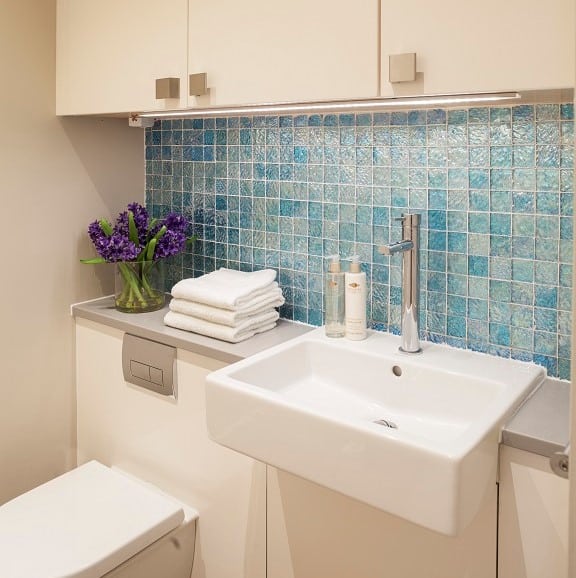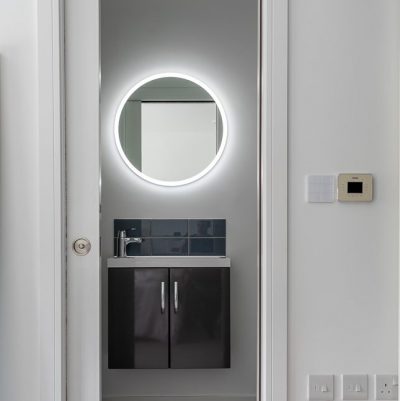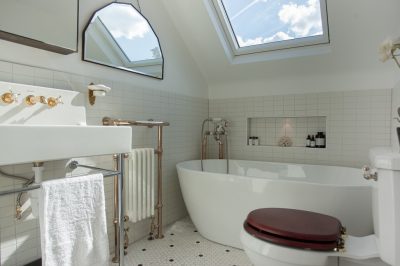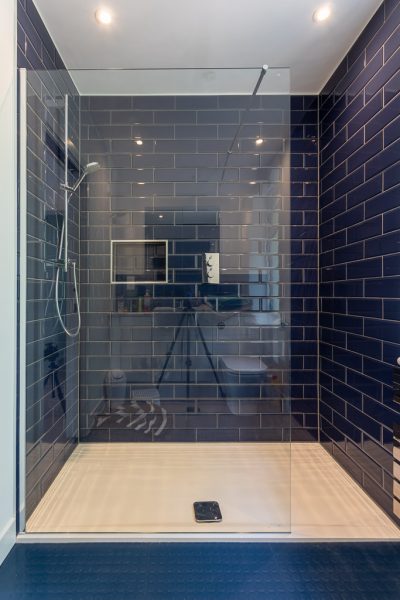
Tips for designing small bathrooms
As a designer working in London most bathrooms are restricted in space. This doesn’t mean that you can’t have a sumptuous and comfortable room but you do have to be clever with the planning. The smallest shower room was a tiny 1.2mtr x 1.7mtr room into which I managed to squeeze a shower (700 x 1200), WC, and a small hand basin with a mirror storage unit above. The room was so small we were unable to photograph it effectively. So to make my point, you don’t always need a lot of space to make a functioning and effective shower/bathroom.
So what are the ‘tricks’ to making the best use of a small space?
- Think creatively, does the plumbing need to go there? Can it go somewhere else that would give you that precious 10cm more of space?
- Cisterns: Could you put the cistern for the WC somewhere else? Concealed cisterns take up a lot less space than freestanding WC & cisterns.
- Small fittings: Sanitary designers have become so much better as providing us with smaller pans on which to put our behinds, find out which one has the smallest projection.
- Basins: Do you really need a big basin? How many men actually wet shave any more, could you make do with a smaller bowl. Semi counter hung basins are excellent at giving you a bit of storage below but project away from the unit so that you can still get your toes underneath.
- Taps and showerheads: the ‘followme’ shower headset into the edge of the bath give you a handheld shower without the need for having the hose trailing around the head of the bath area. Wall-mounted taps give a clean and clutter-free look.
- Shower door: In really small spaces using a sliding door, rather than a hinged swinging door often gives you more moving around space within the room.
- Wall-mounted WC and basins are excellent at opening up space. Wall hung sanitary ware makes the room seem more spacious because your eye sees all the floor space deceiving the eye into seeing more space.
- Boxing: Hide unsightly pipework behind boxing
- Mirrors: Use large mirrors or mirrored cabinets to reflect light back into the room.
- Underfloor heating: Use electric underfloor heating this also means the room remains warm so you don’t get the same issue with condensation on the mirror also you don’t have to find space for a radiator. Or you could use a wall-mounted towel rail.
- Tiles: Large tiles in small spaces create impact and don’t break up the wall into small boxes. They also create impact. Tiling one wall in a different tile either a mosaic or different colour can give impact to the shower cubicle.
- Feature wall: A feature wall of interesting tiles rather than a band or dotted around tiles, keeps uniformity.
- Niche: Where possible create an alcove in a shower cubicle or over a bath for all the bottles. I often put a mirror at the back of the long alcove in the shower to reflect light back into what is often quite a small space.
- Lighting: one of the most underrated aspects of any room, good lighting can make a small room feel large. Create two circuits, one with general overhead lighting and one for the accent lighting. This way you can have low-level lighting in a bath/shower room, which is nice if you have to use the room during the night. Use small low-level lights in alcoves and behind mirror units.
- Flooring: Rather than a pattern on the floor, use a plain tile or flooring.
Having given you all these tricks the main trick for small bathrooms is planning!
Click here to return to all articles or click left or right headings below to scroll through articles.



